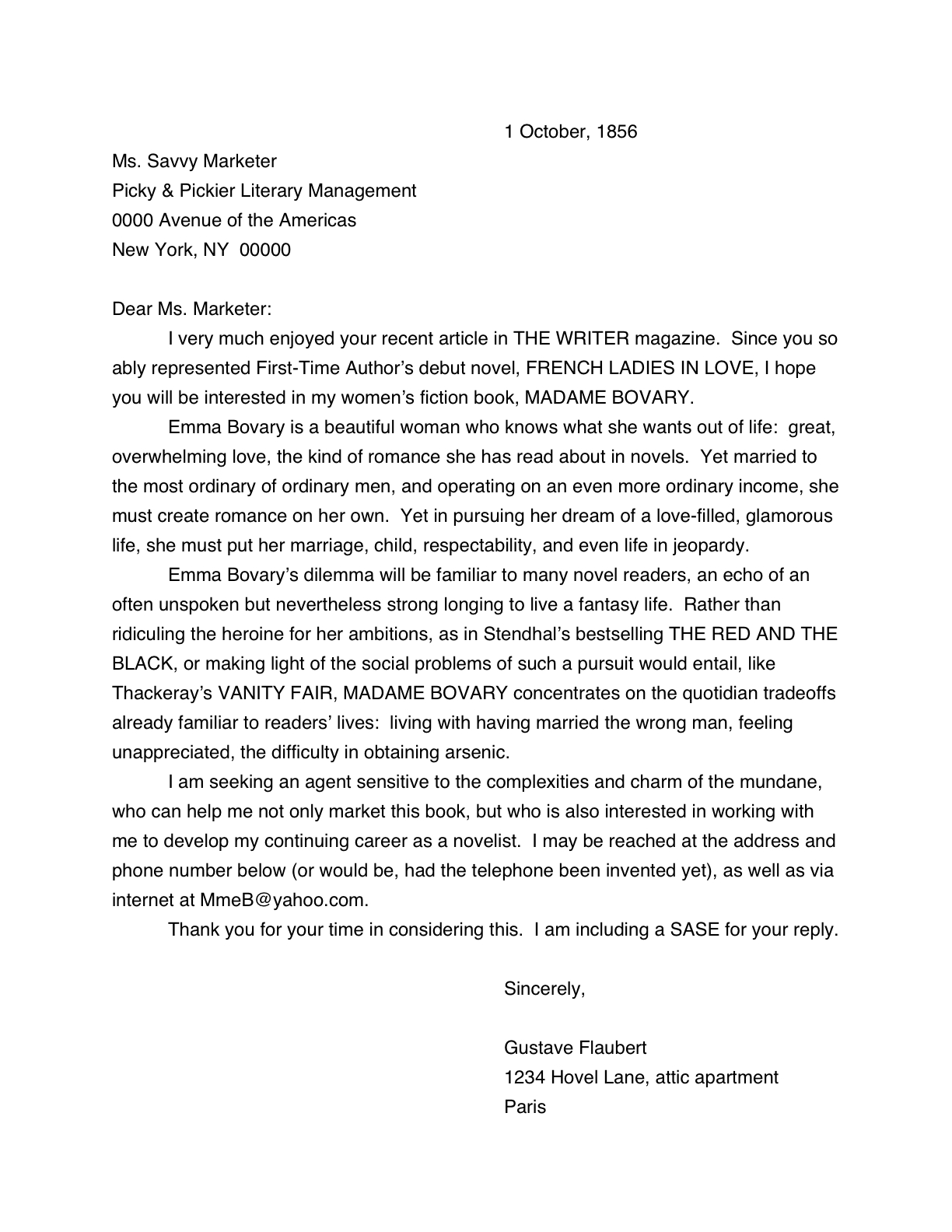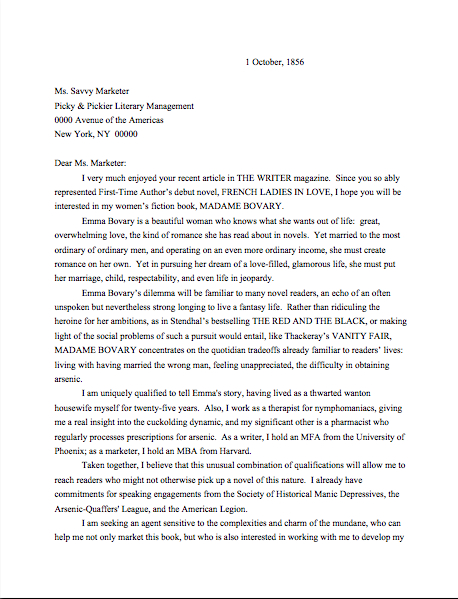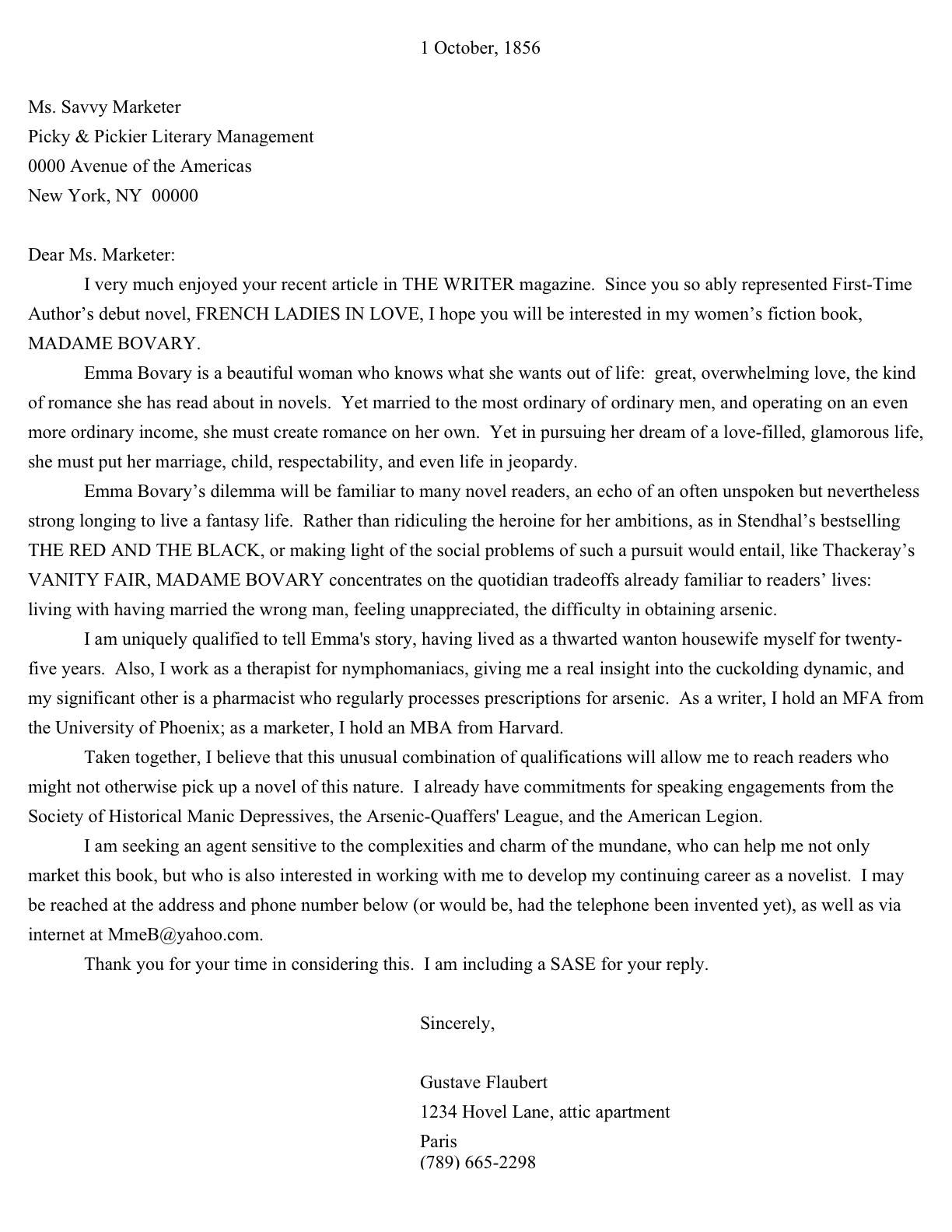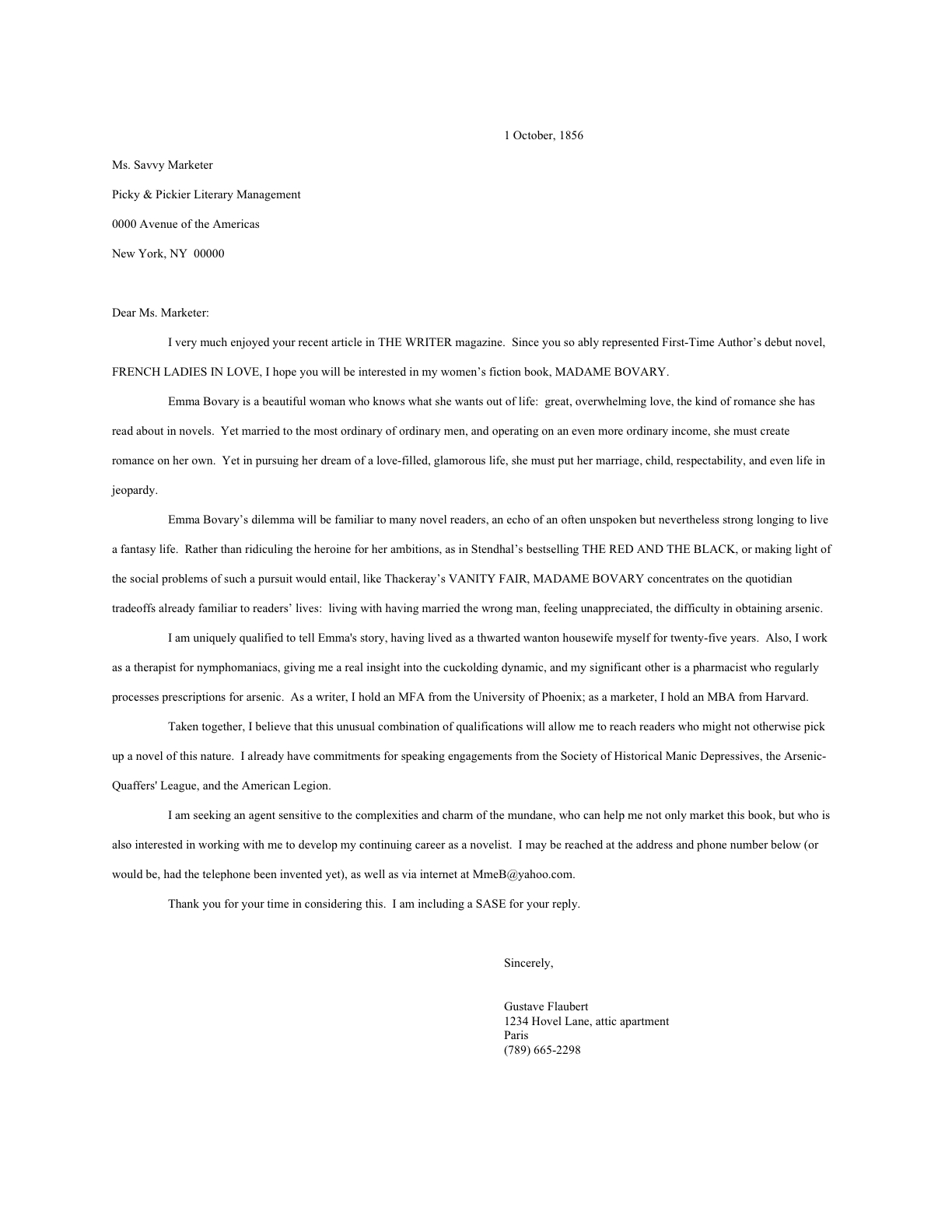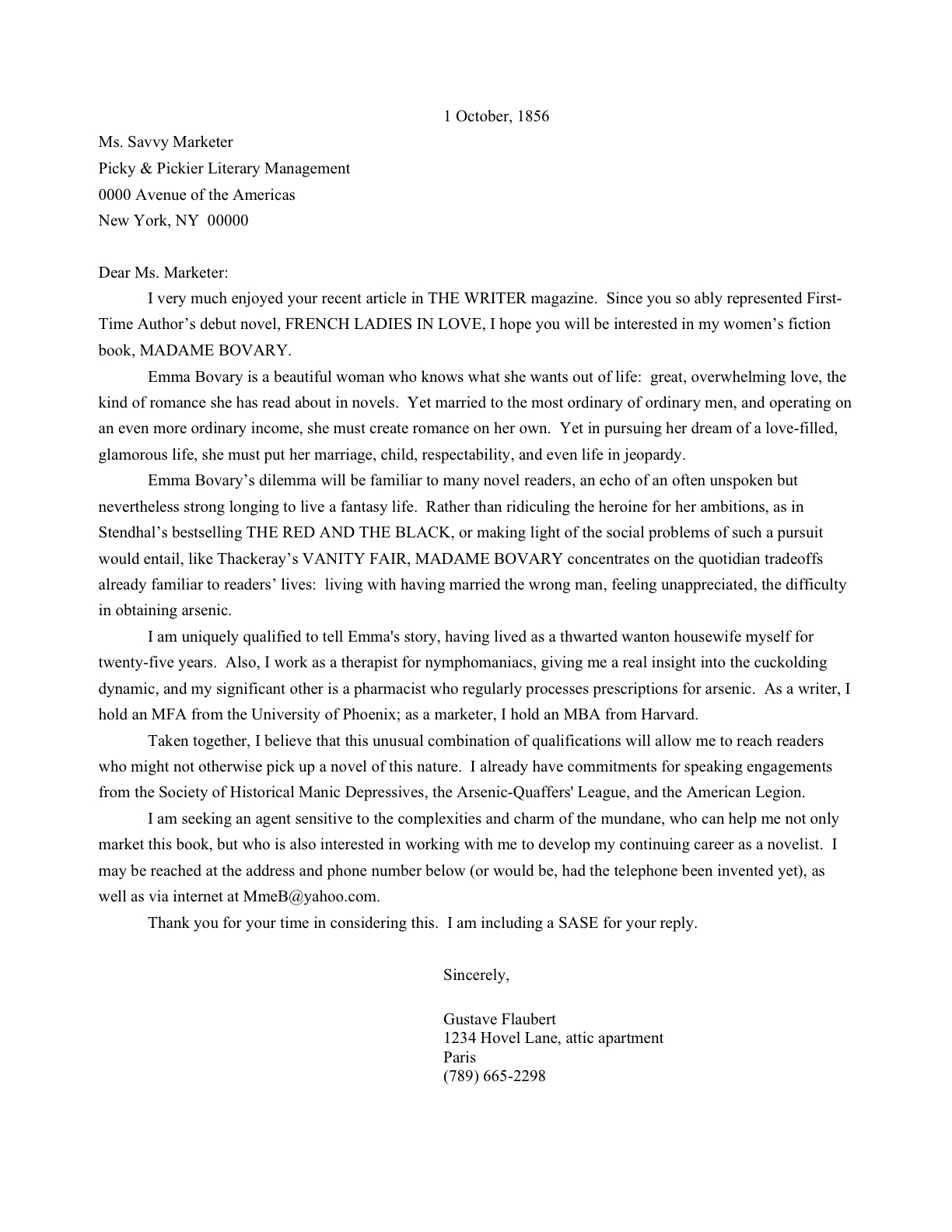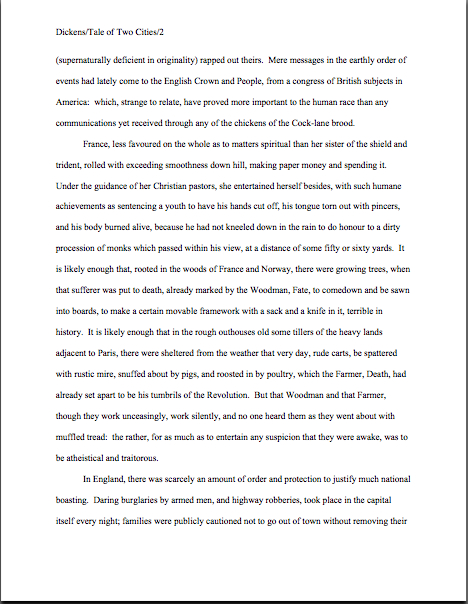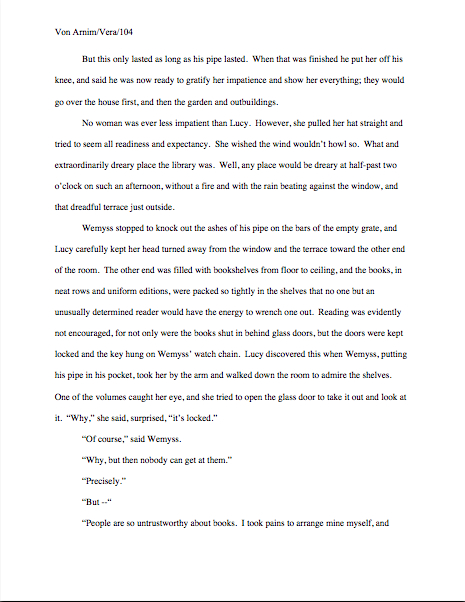Or, this  is not the same thing as this
is not the same thing as this 
I meant to get back to our series on how to find useful feedback on your manuscripts — or, more precisely, to my mid-series digression on protecting your work whilst sharing it — over the weekend, or at any rate yesterday. (Happy post-Presidents’ Day, everyone.) However, my Significant Other harbors some absurd prejudice in favor of our spending Valentine’s Day weekend together. Where do kids these days pick up such zany ideas?
I’m mention this not for the sake of romantic one-upsmanship, but as an explanation to those of you new commenters who may have been trying to chime in over this particular weekend. For those of you new to the blog: in order to prevent the truly epic amount of spam I receive from wasting everyone’s time in the comments, my blogging program requires that I personally approve posts by all first-time commenters. As a result, freshman comments sometimes take a few days to post.
It’s the nature of the beast, I’m afraid.
Over the weekend (which I must admit was probably significantly more romantic than it would have been had I kept sitting down to blog; my SO was quite patient while I held an editing client’s hand through a no-fault-of-her-own literary crisis), I was thinking of you, however. To be specific, I was thinking that it had been quite some time since I asked one of the most basic questions that must be faced by writers in the computer age:
When was the last time you backed up your hard disk — or, more importantly for our purposes, your writing files?
Like, say, the ones containing the novel you’ve been writing for the past two years, or the contest entry you’re planning to pop into the mail next week? If you didn’t make a back-up either today or yesterday, may I cajole you into doing it soon?
How soon, you ask? Well, not to be alarmist, but would now-ish work for you?
I’m quite serious about this; go ahead. (If you’re new to backing up your work, the BACK-UP COPIES category at right may prove helpful.) I’ll still be here when you get back, languishing on my chaise longue.
What’s with the urgency, you ask? I could answer in philosophical terms — he things of this world are, after all, ephemeral, and computer files even more so — but frankly, my reason for nagging you about it periodically couldn’t be more practical. I’ve seen far too many writers lose weeks, months, and even years of good work due to various stripes of computer failure. As a freelance editor, I can’t even begin to tally up the number of times clients have called me in tears, begging me to search my files for a hard copy of an earlier draft of their books, because the only soft copy fell victim to a virus or hard drive meltdown.
Ask anyone who works in a computer repair facility: with even the most reliable system, it’s not a matter of if it will break down; it’s a matter of when. In picking the day of demise, computers are notoriously disrespectful of a writer’s imminent deadlines, requests from agents, or even the joy that accompanies finally polishing off a complete draft. In fact, if the moans I’ve heard over the years are a representative samples of those let down by their computers, the heavy use a computer often sees just prior to the end of a major writing project seems to be conducive to bringing on system misbehavior.
Which leads me to ask again: if your hard drive died right now, would you have a copy of your current writing project? What about of that query letter you spent two months composing, or that synopsis that took you a year to perfect? Would you even have an up-to-date record of whom you queried when?
Ah, that made you turn pale, didn’t it?
Please, even if you save nothing else on your computer, make frequent backups of your writing. It only takes a few minutes, but some day, you may be deeply grateful that you did.
Back to the topic at hand — which, as it happens, will also make me sound like your mother and might make you turn pale with dread. Last time, I broached the always-hot subject of protecting one’s writing from poachers, including — and this is why we’re talking about this in the midst of a series on finding good feedback-givers — unscrupulous folks with whom you might choose to share your unpublished manuscript.
Once again, I’m not a lawyer, nor do I play one on TV, so if you were looking for actual legal guidance on a specific copyright-related matter, you’d be well advised to get advice from one who specializes in giving legal advice to such legal advice-seekers.
Everyone got that? Good.
We can, however, go over some general principles here. To see how well I made my points last time, here’s a little quiz:
Rudolf Valentino (hey, it was just Valentine’s day, after all) has written a tender novel with the following plot: boy meets girl; boy loses girl over a silly misunderstanding that could easily have been cleared up within five pages had either party deigned to ask the other a basic question or two (along the lines of Is that lady holding your hand your sister or your wife?); boy learns important life lesson that enables him to become a better man; boy and girl are reunited.
Having composed such an original story, our Rudolf, being a sensible boy, seeks out other writers to give him feedback on it, or at any rate to help him figure out why the first 74 agents he queried did not find this plotline unique enough to pique their interest. He joins a writers’ group; he posts excerpts of his first chapter on an online critique site; he sidles other romance-writers in the hallways and charms them into reading his book and giving him their honest responses. (Our Rudolf can be pretty persuasive, you know. If you don’t believe me, see SON OF THE SHEIK.) Soon, several dozen copies of his manuscript are circulating throughout his extensive acquaintance, both in hard copy and electronically. He receives feedback from some; other copies disappear into the ether.
At what point in this process should Rudolf begin worrying about protecting his writing — and at what point running, not walking, toward an attorney conversant with copyright law with an eye to enforcing his trampled-upon rights?
(a) When he notices that a book with a similar plot line has just been published?
(b) When he notices that a hefty proportion of the romantic comedy films made within the last hundred years have a similar plot line?
(c) When a fellow member of his writing group lands an agent for a book with a similar plot line?
(d) When he picks up a book with somebody else’s name on the cover and discovers more than 50 consecutive words have apparently been lifted verbatim from a Valentino designer original?
(e) Before he gave it to anyone at all?
Let’s take the point where he should be consulting a lawyer first. If you said (d), clap yourself heartily upon the back. (I know it’s tough to do while simultaneously reading this and making a back-up of your writing files, but then, you’re a very talented person.) The last time I checked, anything beyond 50 consecutive words — or less, if it’s not properly attributed — is not fair use. After that, we’re into plagiarism territory.
If you said (c), you’re in pretty good company: at that point, most writers would tell Rudolf that he should be keeping a sharp eye upon that other writer. It would be prudent, perhaps, to take a long, hard look at the other writer’s book — which, as they’re in the same critique group, shouldn’t be all that hard to pull off.
But should plot similarity alone send him sprinting toward Lawyers for the Arts? No. Plot lifting is not the same thing as writing theft.
Why? Everyone who read my last post, chant it with me now, if you can spare time from making that backup: because you can’t copyright an idea for a book; you can only copyright the presentation of it.
That doesn’t mean that there aren’t a few small steps that Rudolf might take to protect himself. Unfortunately, most of those steps would need to be taken prior to the point of discovering that some enterprising soul had made off with his writing.
Hint: the answer to the first question in the quiz, the one asking when a prudent Rudolf should begin thinking about protecting his manuscript, is (e). Especially — and this doesn’t happen as much in the age of computers as it did in the age of typewriters, but the warning still bears repeating — if Rudolf was circulating his only copy.
(That couldn’t happen to you, of course. You have a back-up of your writing files tucked away somewhere safe now, right?)
As I mentioned last time, the single best thing you can do to protect yourself is to deal with reputable agents, editors, and publishing houses. The problem is, you can’t always tell. The Internet, while considerably easing the process of finding agents and small publishers hungry for new work, also renders it hard to tell who is on the up-and-up. I hope I’m not shocking anyone when I point out that a charlatan’s website can look just like Honest Abe’s — and that’s more of a problem with the publishing industry than in many others.
Why? Well, new agencies and small publishing houses pop up every day, often for the best reasons imaginable — when older publishing houses break up or are bought out, for instance, editors often make the switch to agency, and successful agents and editors both sometimes set up shop for themselves. But since you don’t need a specialized degree to become an agent or start a publishing house, there are also plenty of folks out there who just hang up shingles.
Or, more commonly, websites.
Which is one reason that, as those of you who survived my 2007 Book Marketing 101 series (conveniently collected for those of you who missed it on the category list at right) will recall, I am a BIG advocate of gathering information about ANY prospective agency or publishing house from more than one source. Especially if the source in question is the agency’s website — and if the agency in question is not listed in one of the standard agency guides.
“Wha–?” I hear some of you cry.
Listing in those guides is not, after all, automatic, and like everything else in publishing, the information in those guides is not gathered mere seconds before the book goes to presses. The result: agencies can go in or out of business so swiftly that there isn’t time for the changes to get listed in the standard guides.
That’s problematic for aspiring writers, frequently, because start-ups are often the ones most accepting of previously unpublished writers’ work. But because it is in your interests to know precisely who is going to be on the receiving end of your submission — PARTICULARLY if you are planning to query or submit via e-mail — you honestly do need to do some homework on these people.
Happily, as I mentioned last time, there are now quite a few sources online for double-checking the credibility of professionals to whom you are considering sending your manuscript. Reputable agents don’t like disreputable ones any more than writers do, so a good place to begin verifying an agent or agency’s credibility is their professional organization in the country where the agency is ostensibly located. For the English-speaking world:
In the United States, contact the Association of Authors’ Representatives.
In the United Kingdom, contact the Association of Authors’ Agents.
In Australia, contact the Australian Literary Agents Association.
I couldn’t find a specific association for Canada (if anyone knows of one, please let me know, and I’ll be delighted to update this), but the Association of Canadian Publishers’ website does include information about literary agencies north of the border.
Not all agents are members of these organizations, but if there have been complaints from writers in the past, these groups should be able to tell you. It’s also worth checking on Preditors and Editors or the Absolute Write Water Cooler, excellent places to check who is doing what to folks like us these days. Writer Beware, a website sponsored by the Science Fiction and Fantasy Writers of America, provides a wealth of resources for those who want to learn about scams aimed at writers.
In case it might influence the decision-making process of those of you quietly rolling your eyes at the prospect of investing even more of your scant writing time in researching folks whose ostensible purpose in life is to help writers, I should add: all but the last site I listed are also pretty good places to learn about agents’ specialties, on the off chance that you might be looking for someone to query now that the Great New Year’s Resolution Plague of 2009 has receded into memory.
Again, I just mention. And have you done that backup yet?
As with any business transaction on the Internet (or indeed, with anyone you’ve never heard of before), it also pays to take things slowly — and with a massive grain of salt. An agency or publishing house should be able to tell potential authors what specific books it has handled, for instance. (In the U.S., book sales are a matter of public record, so there is no conceivable reason to preserve secrecy.)
Also, even if an agency is brand-new, you should be able to find out where its agents have worked before — in fact, a reputable new agency is generally only too happy to provide that information, to demonstrate its own excellent connections.
Also, reputable agencies make their money by selling their clients’ books, not by charging them fees. If any agent ever asks you for a reading fee, an editing fee, or insists that you need to pay a particular editing company for an evaluation of your work, instantly contact the relevant country’s agents’ association. (For some hair-raising examples of what can happen to writers who don’t double-check, please see the FEE-CHARGING AGENTS category at right.)
Actually, anyone asking a writer for cash up front in exchange for considering representation or publication is more than a bit suspect — not only according to me, but according to the AAR. Unless a publisher bills itself up front as a subsidy press (which asks the authors of the books it accepts to bear some of the costs of publication) or you are planning to self-publish, there’s no reason for money to be discussed at all until they’ve asked to buy your work, right?
And even then, the money should be flowing toward the author, not away from her.
With publishing houses, too, be suspicious if you’re told that you MUST use a particular outside editing service or pay for some other kind of professional evaluation. As those of you who have been submitting for a while already know, reputable agents and editors like to make up their own minds about what to represent or publish; they’re highly unlikely to refer that choice out of house. And any reputable freelance editor will be quite up front about the fact that while professional editing can help make a manuscript more publishable, it’s not a guarantee of publication.
Generally speaking — to sound like your mother for yet another long moment — if an agency or publisher sounds like too good a deal to be true, chances are that it is. There are, alas, plenty of unscrupulous folks out there ready to take unsuspecting writers’ money, and while many agencies and publishers do in fact maintain websites, this is still a paper-based industry, for the most part.
In other words, it is not, by and large, devoted to the proposition that an aspiring author should be able to Google literary agent and come up with the ideal fit right off the bat.
Do I hear some more doubtful muttering out there? “But Anne,” I hear many voices cry, “I certainly do not want to be bilked by a faux agency or publishing house. However, I notice that you’ve been talking about such disreputable sorts conning me out of ready cash, not potentially walking off with my submission. Weren’t we discussing about protecting our writing, not our pocketbooks?”
Well caught, disembodied voices — and that’s part of my point. The fact is, if an unscrupulous agent or editor were seriously interested in defrauding aspiring writers, stealing manuscripts would not be the most efficient way to go about it. Historically, direct extraction of cash from the writer’s pocket has been the preferred method.
But that doesn’t mean that a savvy writer shouldn’t take reasonable steps to protect both her pocketbook AND her manuscript. Even during a period where the legitimate literary agencies are being so cautiously selective, an aspiring writer should never front money for professional services without knowing precisely what s/he is getting in return. Take the time to do your homework.
Oh, and make backups regularly as well. Imagine Rudolf’s embarrassment if he had to admit to his wide circle of blandished acquaintance that he was the only one of them who didn’t possess a copy of his manuscript.
Next time, I shall delve into manuscript protection itself, I promise — and, shortly after that, return to our larger topic, tracking down sources of good manuscript feedback. In the meantime, keep up the good work!















